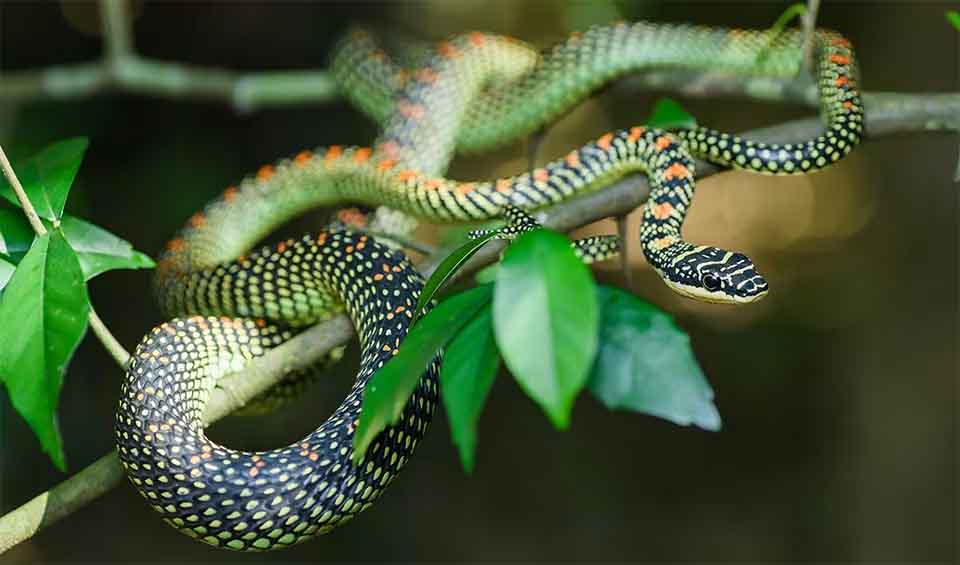Found primarily in the forests of Southeast Asia, these snakes have adapted unique physical traits that enable them to move from tree to tree with surprising agility and grace, earning them the nickname “flying snake.”
Physically, paradise flying snakes are moderately long, and their bodies are slender and muscular, which aids in their aerial maneuverability. The scales of these snakes feature stunning color patterns that can vary from black and yellow to greenish with orange or red touches, providing excellent camouflage among the foliage of their arboreal habitats. This camouflage plays a crucial role in their survival, helping them blend in to avoid predators and sneak up on their prey.
The most astonishing feature of the Paradise flying snake is its ability to glide. Unlike birds or bats with wings, these snakes use their rib cage to perform this feat. By flattening their bodies and splaying their ribs, they can turn their once-slender bodies into a sort of flattened ‘S’ shape. This unique transformation increases their body width and creates an aerodynamic surface, allowing them to catch air currents. They launch themselves from high branches, propelling forward with a whip-like motion of their tail, and then glide through the air, controlling their direction with slight movements of their tail and body.
Their gliding ability is not just for show; it’s a practical mode of travel that allows them to cover distances up to 10 meters (33 feet) (or more with favorable wind conditions), helping them escape predators, search for food, and explore new territories. This remarkable ability makes them one of the only snakes capable of such feats, setting them apart in the reptile world.
Distribution
 Brunei
Brunei India
India Indonesia
Indonesia Malaysia
Malaysia Myanmar
Myanmar Philippines
Philippines Singapore
Singapore Thailand
ThailandAnything we've missed?
Help us improve this page by suggesting edits. Glory never dies!
Suggest an editGet to know me
Terrestrial / Aquatic
Altricial / Precocial
Polygamous / Monogamous
Dimorphic (size / Monomorphic
Active: Diurnal / Nocturnal
Social behavior: Solitary / Pack / Herd
Diet: Carnivore / Herbivore / Omnivore / Piscivorous / Insectivore
Migratory: Yes / No
Domesticated: Yes / No
Dangerous: Yes / No




